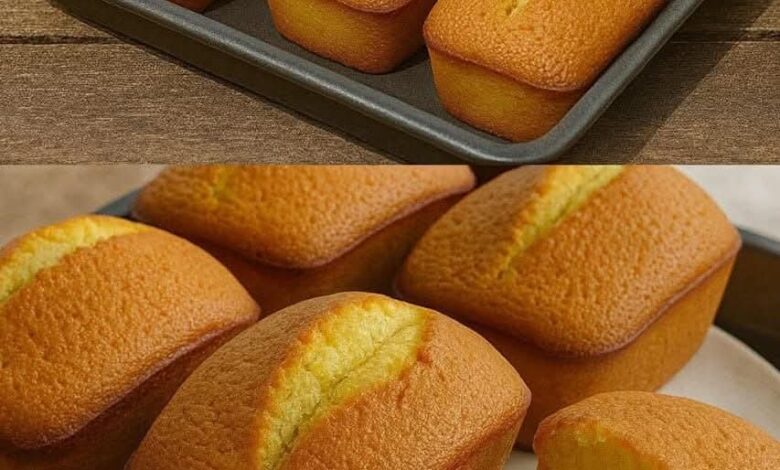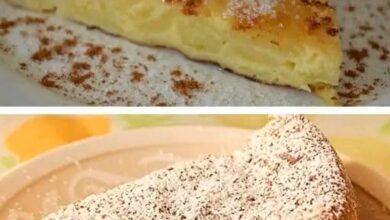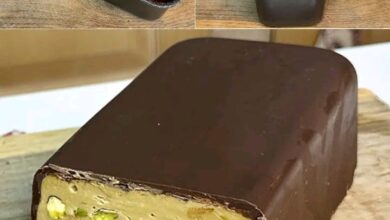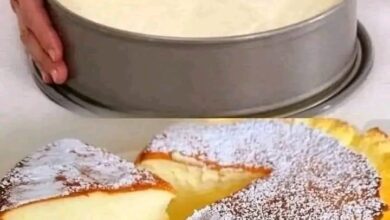🍰 Classic Vanilla Sponge Cake

Sure! Here’s a comprehensive C.O.M.M.E.N.T.-style breakdown of the 🍰 Classic Vanilla Sponge Cake, using the structure you requested:
—
🍰 Classic Vanilla Sponge Cake
Light, fluffy, and delightfully simple — a timeless treat for all occasions.
—
C — Introduction and Origin
The classic vanilla sponge cake is a staple in many kitchens across the world, known for its soft, airy texture and delicate sweetness. Its origins can be traced back to European baking traditions, particularly in the UK and Italy, where it formed the foundation for desserts like Victoria sponge and Genoise. Over time, it has been adopted globally, often serving as the base for layered cakes, trifles, and even birthday celebrations. What makes it so beloved is its versatility and ability to pair beautifully with creams, fruits, or frostings—or to shine on its own.
—
O — Origin and Cultural Significance
The vanilla sponge cake has deep cultural roots in Western culinary traditions. In Britain, it is an essential part of the iconic “Victoria sponge,” named after Queen Victoria, who enjoyed a slice with her afternoon tea. In Japan, the Castella (Kasutera) sponge cake, a derivative introduced by Portuguese merchants in the 16th century, became a national favorite with a uniquely fine crumb. Across cultures, this cake symbolizes simplicity and celebration, often baked for birthdays, weddings, or Sunday family gatherings.
—
M — Ingredients Quantity and Optional Additions
Ingredients (Yields one 8-inch round cake):
1 cup (125g) all-purpose flour
1 tsp baking powder
1/4 tsp salt
1/2 cup (113g) unsalted butter, softened
3/4 cup (150g) granulated sugar
2 large eggs, at room temperature
1 1/2 tsp pure vanilla extract
Optional Additions:
2 tbsp milk for extra moisture
Zest of 1 lemon or orange for a citrus twist
1/4 tsp almond extract for depth
Fresh berries or whipped cream for serving
Frosting or glaze for layering or finishing
—
M — Tips for Success
Room temperature ingredients (especially eggs and butter) help achieve a uniform batter and a light crumb.
Do not overmix the batter once the flour is added to avoid a dense cake.
Use a scale to measure ingredients accurately.
Line the cake pan with parchment paper to prevent sticking.
Cool completely before slicing or decorating.
Sift the dry ingredients to incorporate air and ensure even mixing.
—
E — Instructions
1. Preheat your oven to 350°F (175°C). Grease and line an 8-inch round cake pan with parchment paper.
2. Sift the flour, baking powder, and salt together in a medium bowl. Set aside.
3. In a large bowl, cream the softened butter and sugar together until light and fluffy (about 3–5 minutes).
4. Add the eggs one at a time, beating well after each addition.
5. Stir in the vanilla extract.
6. Gently fold the dry ingredients into the wet mixture in 2–3 batches. Do not overmix.
7. If desired, stir in 2 tablespoons of milk for extra moisture.
8. Pour the batter into the prepared pan and smooth the top.
9. Bake for 25–30 minutes, or until a toothpick inserted into the center comes out clean.
10. Let the cake cool in the pan for 10 minutes, then transfer to a wire rack to cool completely.
—
N — Description
This vanilla sponge cake is soft, buttery, and subtly sweet with a fine, tender crumb. The golden crust adds a slight contrast to its pillowy interior. It serves beautifully as a standalone dessert or as a base for elaborate creations like layer cakes or trifles. Each bite melts in your mouth, delivering pure vanilla essence with a hint of nostalgia.
—
T — Nutritional Information (Per Slice – based on 8 slices)
Calories: ~230 kcal
Total Fat: 12g
Saturated Fat: 7g
Cholesterol: 85mg
Carbohydrates: 27g
Sugar: 15g
Protein: 3g
Fiber: 0.5g
Sodium: 120mg
(Note: Nutritional values are approximate and may vary based on specific brands and measurements.)
—
Conclusion and Recommendation
Whether you’re a seasoned baker or a beginner, the classic vanilla sponge cake is a must-have recipe in your repertoire. Its simplicity is its strength—perfect on its own or as a canvas for creativity. You can enjoy it plain, dress it up with frosting, or use it as the foundation for a decadent layered dessert. Great for birthdays, tea time, or spontaneous sweet cravings.
—
Embracing Healthful Indulgence
If you’re looking to make this sponge cake a little lighter, consider the following swaps:
Replace half the butter with Greek yogurt for lower fat and added protein.
Use whole wheat pastry flour for extra fiber.
Substitute coconut sugar or maple syrup for refined sugar.
Add fresh fruit toppings instead of heavy frostings.
Moderation and mindfulness are key. A slice of homemade cake, made with care and real ingredients, is a joy that fits into a balanced lifestyle.
—
Would you like me to format this as a printable recipe card or a blog post layout?



